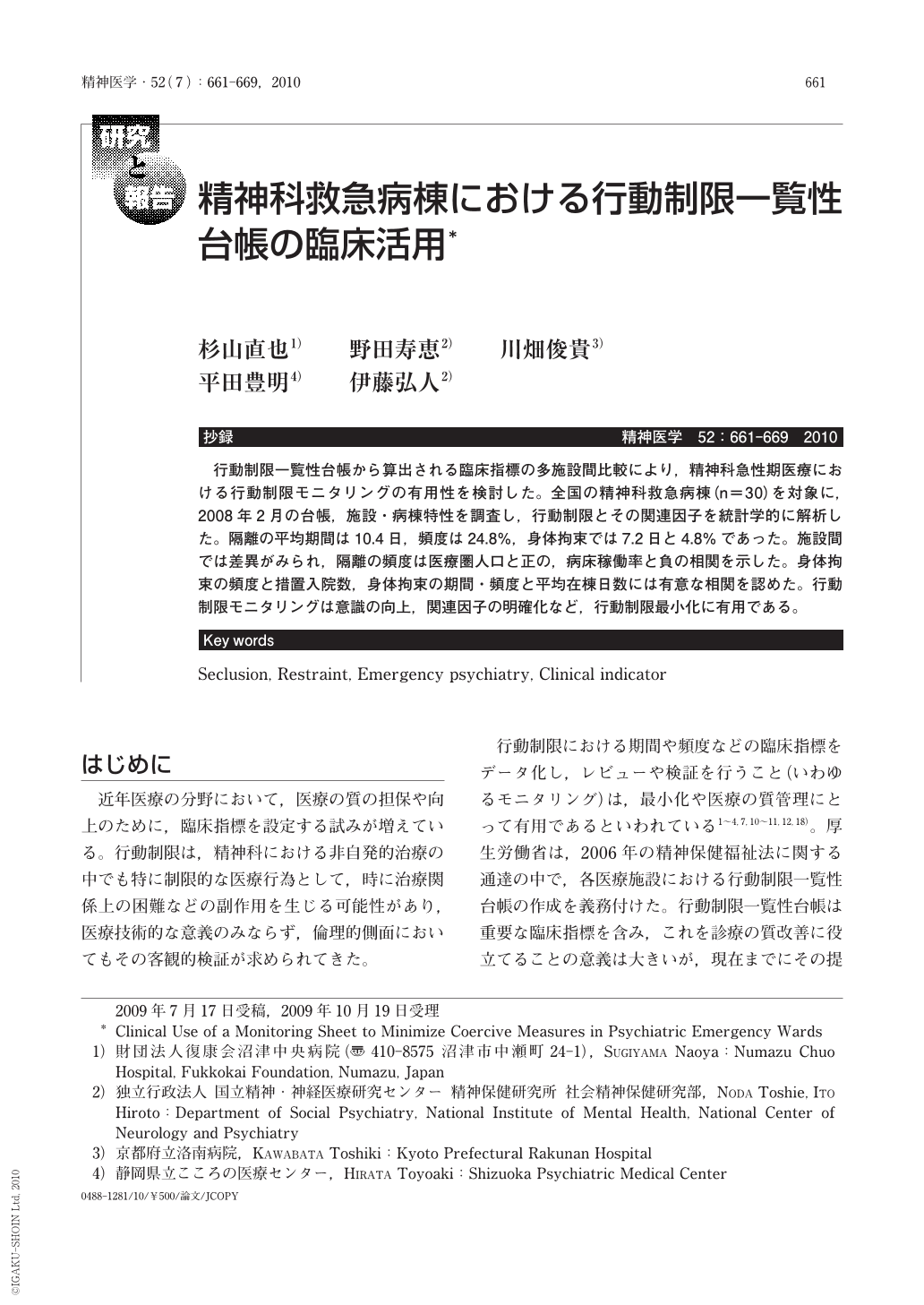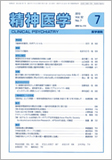Japanese
English
- 有料閲覧
- Abstract 文献概要
- 1ページ目 Look Inside
- 参考文献 Reference
- サイト内被引用 Cited by
抄録
行動制限一覧性台帳から算出される臨床指標の多施設間比較により,精神科急性期医療における行動制限モニタリングの有用性を検討した。全国の精神科救急病棟(n=30)を対象に,2008年2月の台帳,施設・病棟特性を調査し,行動制限とその関連因子を統計学的に解析した。隔離の平均期間は10.4日,頻度は24.8%,身体拘束では7.2日と4.8%であった。施設間では差異がみられ,隔離の頻度は医療圏人口と正の,病床稼働率と負の相関を示した。身体拘束の頻度と措置入院数,身体拘束の期間・頻度と平均在棟日数には有意な相関を認めた。行動制限モニタリングは意識の向上,関連因子の明確化など,行動制限最小化に有用である。
Using the quality indicators stated in the monitoring sheet of coercive measures, we investigated the usefulness of monitoring seclusion and restraint (SR) in acute psychiatric settings. Thirty emergency wards in psychiatric facilities were monitored. The monitoring sheets of February 2008 and data on the characteristics of the facilities and wards were collected, and the correlations of these characteristics with the use of SR were statistically investigated. The mean duration of seclusion was 10.4 days and frequency, 24.8%:for restraint, the mean duration was 7.2 days and frequency, 4.8%. A wide range of variation was observed across facilities. The correlation of the frequency of seclusion has a positive correlation with the population of the catchments areas and a negative correlation with the ward operation rate. There was a significant correlation between the frequency of restraint and the number of civil (compulsory) admissions. The duration and frequency of restraint were also correlated with the mean duration of patient stays. Monitoring SR proved to be significantly useful for inter-institutional evaluation aimed at minimizing the use of SR in terms of increasing staff awareness and determining the relevant factors.

Copyright © 2010, Igaku-Shoin Ltd. All rights reserved.


